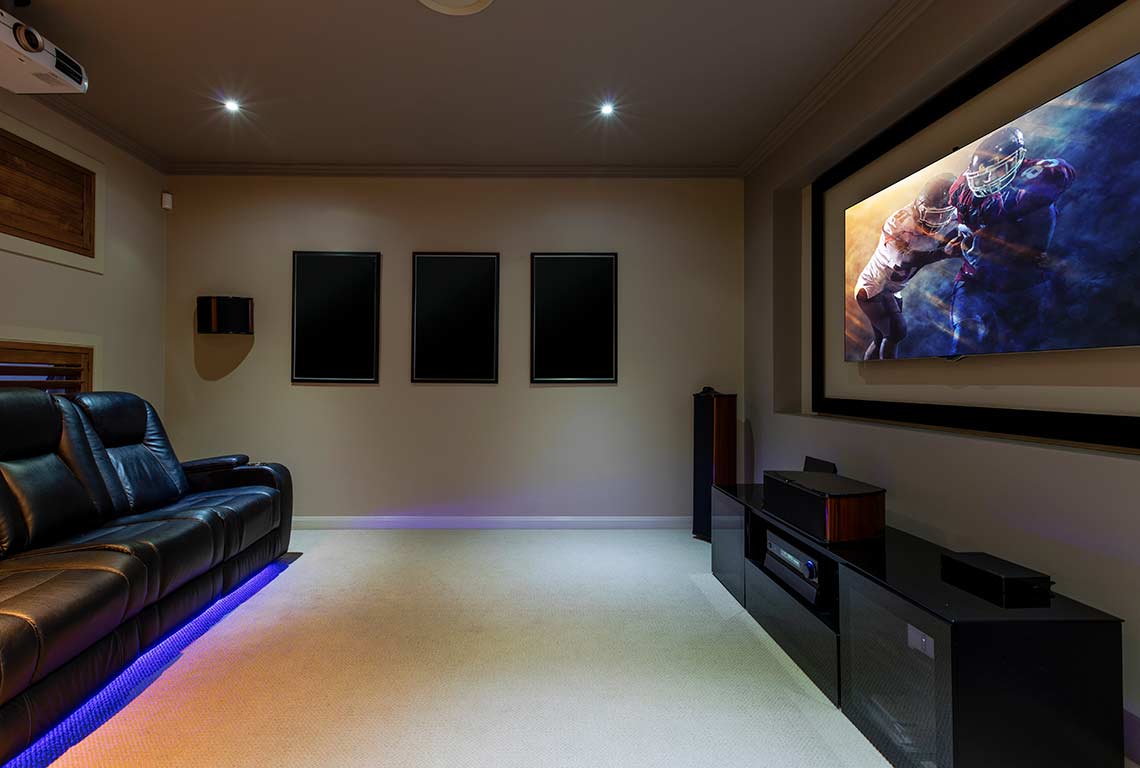You’ve been dreaming of having a home theater, but the floor-to-ceiling screen and plush room may seem too luxurious for your budget or too large for your home’s available space. At iWired we know that it’s easier than you think to have a cozy home theater that matches your budget and space.
Once you determine the dimensions of the space you want to transform into your home theater, you can begin locating the proper equipment, from screen to speakers. Here are our five suggestions for building a home theater that fits your lifestyle.

Calculate Your Screen Size
Number of Speakers

Choose a Receiver
It’s time to power your speakers with a receiver, and luckily, achieving immersive sound is much easier in a smaller space. To understand how much power your receiver will generate, make sure to ask retailers about the unit’s power rating when making your purchase. Your small space is a benefit, saving you money by using a lower power receiver.
Select Your Display Type

Consider a Projector
If you’ve decided you want to use a projector in your home theater, it’s still easy to get lost in all the confusing technical terms like lens shift, contrast ratio, DLP, LCD, CLOS, lumens, and anamorphic. So here’s our guide as you choose a projector.
Lens Shift
Lens Shift is a feature that allows you to enhance your projector’s placement flexibility. High-quality home theater projectors utilize both vertical and horizontal lens shift, which grants you maximum control over your image’s location on the wall.
Auto-iris
The auto-iris deepens blacks and brightens light colors in your image. If you have total light control over your home theater’s space, then this isn’t as necessary. However, if there’s the possibility of stray light that could interfere with your image, an auto-iris is essential in your projector. A cheaply-made auto-iris can result in a noisy projector, so do your research before making your purchase.
ANSI lumens
This rating measures the brightness of your image, where a higher lumen number means a brighter image. You’ll need a brightness level that fits your space’s ambient light, as washed-out images are the result of too much light from the projector. A projector with at least 2,000 ANSI lumens is recommended, but brighter rooms may need as much as 4,000 or 4,500.
Your family will be excited to have a home theater of any shape or size, and will always look forward to the next movie night. If you’re thinking of turning that spare room, walk-in closet, or roomy nook into a home theater, call our team of experts at iWired to begin today.
